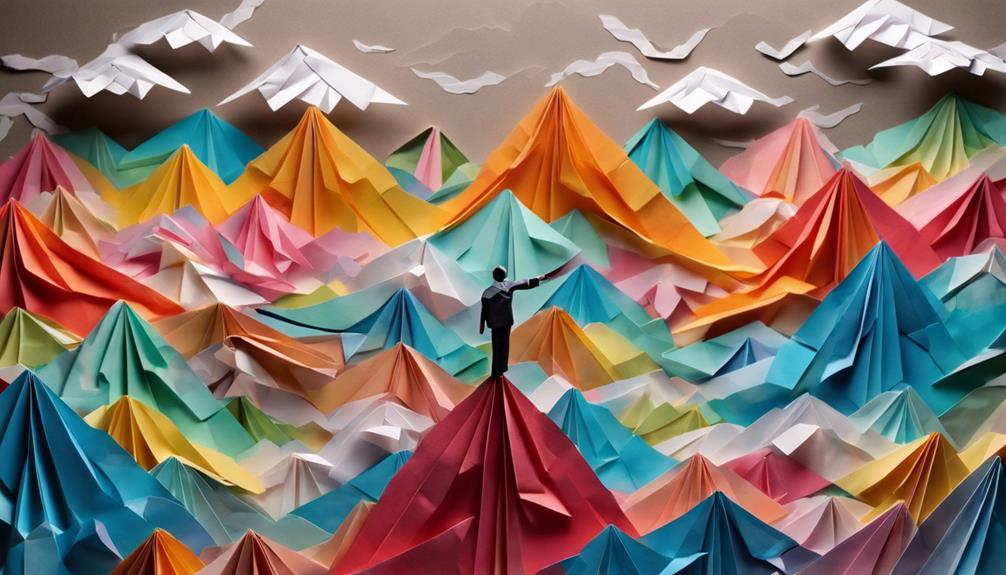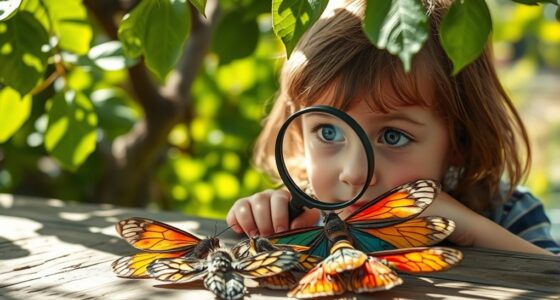By combining your human intuition with AI capabilities, you can unearth new design ideas and accelerate your creative process. AI tools can handle repetitive tasks, offer fresh perspectives, and suggest innovative options, while you focus on the big-picture vision and emotional impact. Integrating both seamlessly into your workflow guarantees efficiency and originality. Keep exploring how this collaboration can expand your creative horizons and result in more compelling projects.
Key Takeaways
- Integrate AI tools into the creative workflow to enhance idea generation and streamline design processes.
- Use AI for diverse options and data-driven insights while maintaining human oversight for emotional and aesthetic qualities.
- Critically evaluate AI-generated suggestions to ensure they align with project goals and ethical standards.
- Maintain transparency with stakeholders about AI involvement to foster trust and responsible collaboration.
- Balance AI efficiency with human intuition to achieve innovative, authentic, and ethically sound design outcomes.

Have you ever wondered how human and AI creativity can work together to produce extraordinary ideas? When you combine the strengths of both, you access a new domain of possibilities in design projects. Collaborative workflows become essential as you integrate AI tools into your creative process. These workflows allow you to leverage AI’s capacity to generate multiple ideas rapidly, analyze vast data sets, and suggest innovative concepts that you might not have considered alone. At the same time, your human intuition, emotional intelligence, and aesthetic judgment guide the project toward a meaningful and cohesive outcome. This partnership accelerates the creative cycle, enabling you to experiment more freely and refine ideas efficiently. As you navigate this synergy, you must also stay mindful of the ethical implications involved. Using AI responsibly means considering issues such as intellectual property rights, bias in algorithms, and transparency. You need to ask yourself how to credit AI-generated content and guarantee that the technology doesn’t perpetuate stereotypes or misinformation. Maintaining ethical standards helps preserve the integrity of your work and builds trust with your clients and audience. When you adopt collaborative workflows, you’re not replacing human creativity but enhancing it. AI acts as a powerful assistant, handling repetitive tasks or providing fresh perspectives, while you focus on the big-picture vision and emotional resonance. This balance allows you to push boundaries without sacrificing authenticity. You might find that AI helps you explore innovative color schemes, generate diverse design options, or optimize layouts based on user data. Yet, it’s essential to remember that AI’s outputs are only as good as the input it receives and the oversight you provide. You’re responsible for critically evaluating AI-generated ideas and integrating them thoughtfully into your design. Awareness of ethical implications also means being transparent about your use of AI with stakeholders and clients, fostering trust through honesty. By understanding and applying reliable backup power principles, you can ensure your projects remain resilient even when unexpected disruptions occur. As you continue to experiment with this collaborative approach, you’ll discover that the most successful projects emerge from a harmonious blend of human insight and machine efficiency. Embracing this partnership allows you to expand your creative horizons while upholding the principles of ethical practice. Ultimately, by embracing collaborative workflows and considering ethical implications, you can harness AI not just as a tool but as a genuine partner in your creative journey, producing designs that are innovative, responsible, and truly compelling.
Frequently Asked Questions
How Do Humans and AI Best Collaborate in Design Workflows?
You should foster collaborative brainstorming sessions where both you and AI generate ideas, encouraging diverse perspectives. Use AI for initial concepts and then refine them through iterative refinement, allowing your creativity to shape and improve designs. By balancing human intuition with AI’s efficiency, you maximize innovation. Stay open to feedback, continuously adjust, and leverage AI as a partner to enhance your workflow, making the creative process more dynamic and effective.
What Are the Ethical Considerations of Using AI in Creative Design?
Ever consider how AI impacts originality? Using AI in design raises ethical issues like protecting intellectual property and ensuring bias mitigation. You must respect creators’ rights and prevent biased outputs that could harm inclusivity. Are you aware of the responsibilities involved? Balancing innovation with ethical standards helps you create fair, respectful designs, ensuring AI supports human creativity without crossing ethical boundaries or compromising integrity.
Can AI Truly Understand Aesthetic Preferences Like Humans Do?
AI can’t truly understand aesthetic preferences like humans do because it lacks aesthetic intuition and emotional resonance. You might find AI-generated designs appealing, but it doesn’t experience emotions or cultural context that shape your preferences. While AI can analyze data to mimic certain styles, it doesn’t grasp the nuanced, subjective feelings behind what makes something beautiful or meaningful to you personally.
How Does AI Influence Originality and Innovation in Design?
You might think AI stifles originality, but it actually sparks innovation through algorithmic aesthetics and creative automation. By handling routine tasks, AI frees you to explore bold, unconventional ideas, pushing design boundaries. It offers fresh perspectives and rapid iteration, inspiring new concepts. Embracing AI’s role enhances your creative process, making your work more inventive and unique, rather than replacing your vision.
What Skills Should Designers Develop to Work Effectively With AI Tools?
To work effectively with AI tools, you should develop AI literacy, understanding how these technologies function and their capabilities. Cultivating a collaborative mindset helps you seamlessly integrate AI into your creative process, fostering innovation. You need to stay adaptable, continuously learning new skills, and be open to experimenting with AI-driven ideas. By combining technical know-how with creativity, you can enhance your design projects and stay ahead in a rapidly evolving landscape.
Conclusion
By merging your creativity with AI’s capabilities, you open endless design possibilities. Did you know that teams integrating AI tools report a 40% boost in innovative ideas? Embrace this synergy to push boundaries and create something truly unique. Remember, AI enhances your vision, not replaces it. Together, you can craft designs that inspire and resonate, shaping the future of creativity with confidence and excitement.









